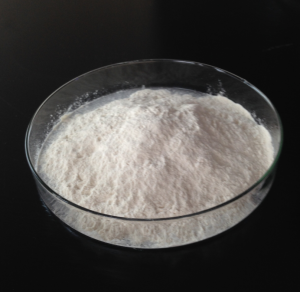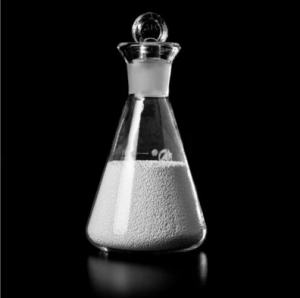Active Pharmaceutical Ingredients Nepafenac Powder
Product Description
Active Pharmaceutical Ingredients Nepafenac Powder cas 78281-72-8
API Nepafenac powder cas 78281-72-8 is a non-steroidal anti-inflammatory drug indicated for the prevention and treatment of inflammation and pain associated with cataract surgery. After administration, nepafenac penetrates the cornea and is rapidly metabolised to amfenac by hydrolases. Nepafenac and amfenac work by potently inhibiting COX-1 and COX-2 enzymes.
| Classification | Type | Nepafenac | |
| CAS NO. | 78281-72-8 | Other names | Nepafenac |
| MF | C15H14N2O2 | EINECS NO. | |
| Place of origin | China | Grade standard | USP grade |
| Purity | 99% | Appearance | Yellow powder |
| HS CODE | 2924299090 | packing | Bag,Drum |
| Shelf life | 3 | Application | RAw Material |
描述
Product Specification:
Nepafenac is a new type of non-steroidal antipyretic, analgesic and anti-inflammatory drugs (NSAIDs) used for the treatment of ocular pain and inflammation caused by cataract surgery. Compared with traditional NSAIDs, the chemical structure of NSAIDs is beneficial to the rapid penetrating of the cornea and distribution of the drug to its target site. Therefore, it is helpful to reduce the accumulation of drugs on the corneal surface, reduce the occurrence of complications on the surface of the eyeball, and has the advantages of strong penetration, strong targeting effect and small toxic and side effects. On August 19, 2005, the United States Food and Drug Administration (FDA) approved Nepafenamide ophthalmic suspension for the treatment of cataract operation-related pain and inflammation, and it was the first NSAID ophthalmic precursor drug preparation to be approved on the market. Nepafenamide, when administered via ocular Chemicalbook, rapidly passes through the cornea and is converted to aminophenic acid (a NSAID) under the action of eye tissue hydrolase; Aminophenic acid plays an anti-inflammatory and analgesic role by inhibiting prostaglandin H synthase (cyclooxygenase) and blocking the synthesis of prostaglandin. As is well known, prostagranins are one of the mediators of intraocular inflammation, which can lead to the collapse of the blood-aqueous barrier, vasodilation, increased vascular permeability and leukocyte chemotaxis, etc. In addition, prostagranins can also contract the iris sphincter through a non-cholinergic mechanism, causing pupil constriction during and after eye surgery. When administered through the eye, NSAIDs inhibit the synthesis of prostaglandins in the iris, ciliary body, and conjunctiva, thus preventing ocular inflammation and reducing pain associated with it.
| Items | Specification |
| Appearance | A yellow or light yellow crystalline powder |
| solubility | conforms |
| Particle size | conforms |
| Individual im purity | ≤0.2% |
| Total im purity | ≤0.5% |
| Impuroty A | ≤0.1% |
| Acetonitrile | ≤0.041% |
| Isopropanol | ≤0.5% |
| Tetrahydrofuran | ≤0.072% |
| Dichloromethane | ≤0.06% |
| Loss on drying | ≤0.5% |
| Sulphated ash | ≤0.1% |
| Heavy metals | ≤0.002% |
| Sterility test | conforms |
| Assay | 98.0%-101.5% |
| Conclusion | It conform to the factory’s standard |



